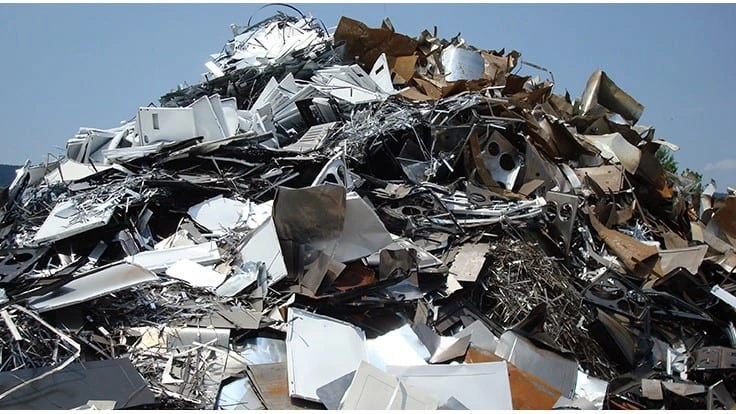
Photo by Brian Taylor.
A combination of global and domestic market factors has caused Fastmarkets AMM index prices to rise from $90 to $110 per ton in the January buying period, depending on the grade and destination. Those factors include healthy global and domestic demand, growing but not yet abundant supply and freight headaches.
The biggest riser, at $110 per ton, was for heavy melting steel (HMS) scrap off the United States East Coast. Buyers from a variety of scrap-deficient nations with rebounding economies and metals-intensive stimulus plans kept those exporters busy.
Processors and traders on the West Coast and in the Midwest experienced only slightly less buying enthusiasm, with ferrous scrap prices rising from $90 to $107 per ton.
As it did in November and December, export buying was a key component on the demand side, as bulk cargoes were booked on both coasts throughout the 30-day buying period that led to the Jan. 6 and Jan. 10, Fastmarkets AMM price index figures.
On the supply side, processors say increased scale pricing has yielded improved peddler traffic and has moved scrap uphill from small dealers to larger shredder yard and export yard operators.
“January is off to a good start,” says a buyer of manufacturing scrap in the Great Lakes region. “I’ll state the obvious by saying as long as the virus remains at bay and there is not a government-mandated shutdown, we should see a solid year.”
The increased generation is welcome at a time when three months of rising prices have provided good margins for scrap processors and anyone else holding inventory of ferrous scrap they had purchased in late 2020 or earlier.
Headaches for processors and traders mostly involve higher seaborne shipping rates (for containers and dry bulk cargoes) and a scramble to find containers to serve that portion of the export market. One recycler says he could have booked and followed through on more overseas sales in December and January if containers could have been found.
Recyclers trying to determine how long the price boom can last are keeping an eye on infrastructure spending in the United States and globally and the impact of vaccines on the health (and activity) of people around the world.
By mid-December of last year, as nations around the world approved COVID-19 vaccines and then began rolling them out, metals producers and speculators seemed to gravitate to the notion that the supply-and-demand scenario for metals was about to change.
The turmoil in the nation's capitol Jan. 6 and any looming shifts in political policy may have caused some concern among Wall Street investors, but it did not seem to put the brakes on steel output or scrap demand.
At the same time scrap prices were settling $100 per ton higher, the Washington-based American Iron and Steel Institute (AISI) reported domestic raw steel production rose by 3.6 percent the week ending Jan. 9, 2021, compared with the week before.
Steel mill capacity rates in the U.S. as measured by AISI have risen from a COVID-19-affected low of 51.1 percent in early May to 75.4 percent the week ending Jan. 9 of this year.
Global steel output has shown a similar upward trajectory. Figures from the Brussels-based World Steel Association (Worldsteel) for November 2020 portray a world where the output of most nations had reached or surpassed prepandemic levels.
One last global demand aspect involves the approval of China’s government for steelmakers there to import about a dozen grades of ferrous scrap. This occurs at the same time steel producers there are investing in electric arc furnace production.
Recyclers know all boom cycles come to an end. Those looking for any shifts in momentum may have noticed that steel rebar prices in China began drifting downward in January while inventory levels for rebar were rising in the nation.
Whether this signals the winding down of metals-intensive infrastructure spending by the Chinse government or if it simply means Chinese New Year is approaching provides fodder for speculators.
Latest from Recycling Today
- BMW Group, Encory launch 'direct recycling’ of batteries
- Loom Carbon, RTI International partner to scale textile recycling technology
- Goodwill Industries of West Michigan, American Glass Mosaics partner to divert glass from landfill
- CARI forms federal advocacy partnership
- Monthly packaging papers shipments down in November
- STEEL Act aims to enhance trade enforcement to prevent dumping of steel in the US
- San Francisco schools introduce compostable lunch trays
- Aduro graduates from Shell GameChanger program





